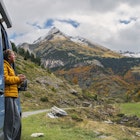All around the world, ephemeral blooms add a magical new layer to our favorite travel destinations.
Japan’s spring cherry blossoms draw in travelers keen to experience the destination at its most ethereal. Provence’s summer lavender fields are flocked by visitors who want to breathe in the signature scent of the south of France. People seek out flowers in the expansive grounds of South Africa’s Kirstenbosch National Botanical Garden and in the wilds of Ecuador’s cloud forests.
In pursuit of nature's most stunning displays, we asked our expert writers to share the best places in the world to see flowers. Here are 14 of the best.
Casteluccio, Italy
Recommended by Julia Buckley
Wedged between the soft peaks of the Sibillini Mountains of central Italy, the Piano Grande (Great Plain) of Castelluccio in Umbria lights up each summer with color. Locals have grown pulses here for centuries, and from late May to July, the annual fioritura (flowering) is a mix of blooming crops and wildflowers — including scarlet poppies, yellow wild mustard and creamy chamomile — that spring up in between them. During the blooming period, the area is so busy that you can’t drive there – shuttles run from nearby towns. But the plain is beautiful even when the blooms are gone, with 50 shades of green striping the basin.
Castelluccio – the village perched on a bluff, overlooking the plateau – was almost destroyed by an earthquake in 2016, and its inhabitants have been largely displaced. Yet, they still come in from wherever they’re housed to cultivate their crops, and each weekend the village comes alive, with restaurants opening up in prefab buildings, and people selling pulses from stalls. This is a rare place in Europe where tourism is helping, not hindering.
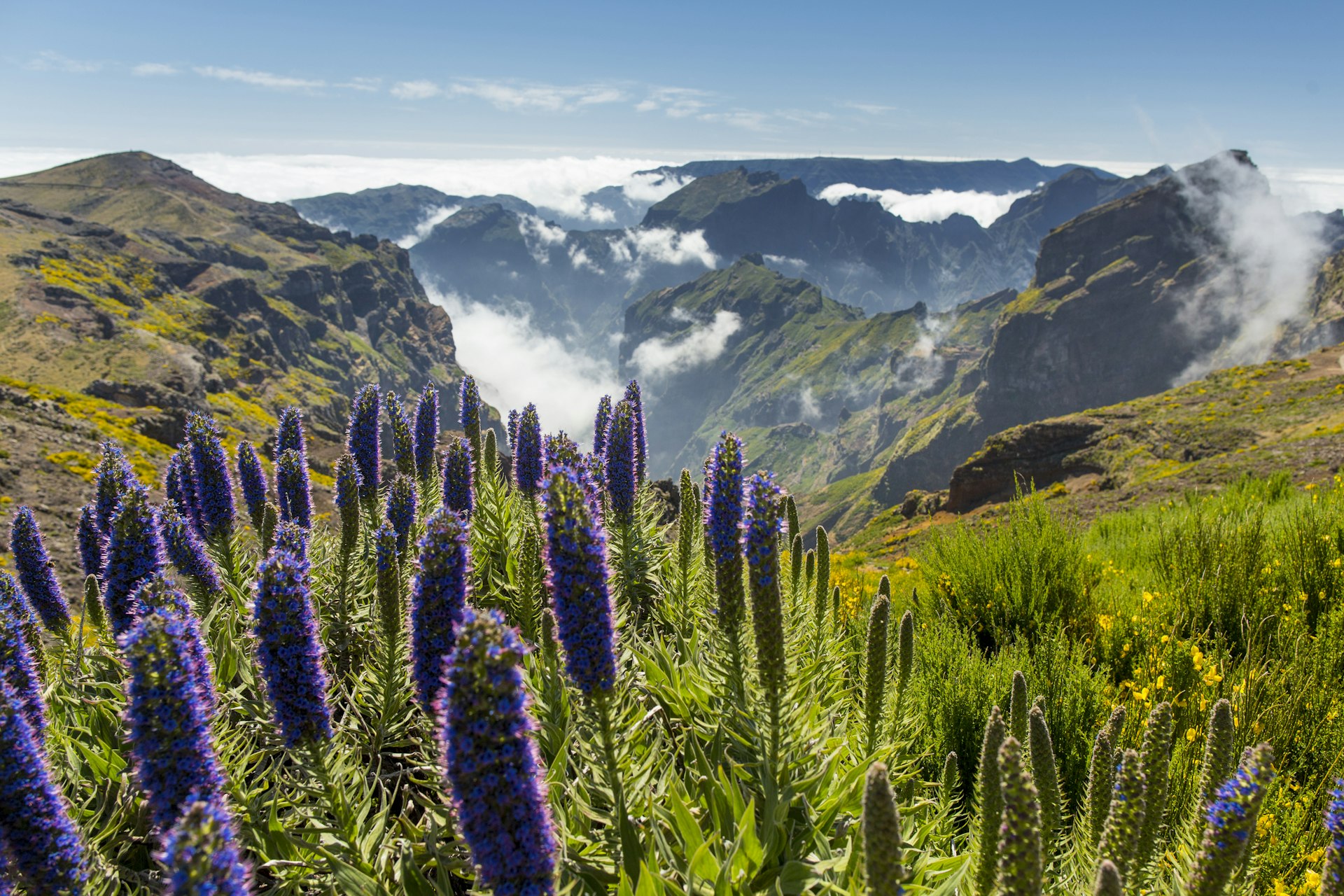
Madeira
Recommended by Austin Bush
Located off the coast of Africa but officially part of Portugal, Madeira is home to a semi-tropical climate and rich, volcanic soil, elements that undoubtedly contributed to its nickname, “the island of flowers.” Many of Madeira’s colorful blooms are indigenous to the island, but Portuguese sailors also introduced a variety of flowers on their way to and from colonies in Africa, Asia and the Americas. The result is an almost kaleidoscopic landscape of purple agapanthus, bright orange birds of paradise and prehistoric-looking tree aloe – among many others. You’ll see lots of flowers on the side of the road simply while exploring the island, but for a crash course in Madeira’s flora, consider visiting Jardins Botânicos da Madeira or the Monte Palace Tropical Gardens. And if you’re really serious about the topic, consider a visit to Madeira in spring, which is not only when many flowers are in full bloom, but is also when the island’s annual flower festival unfolds.
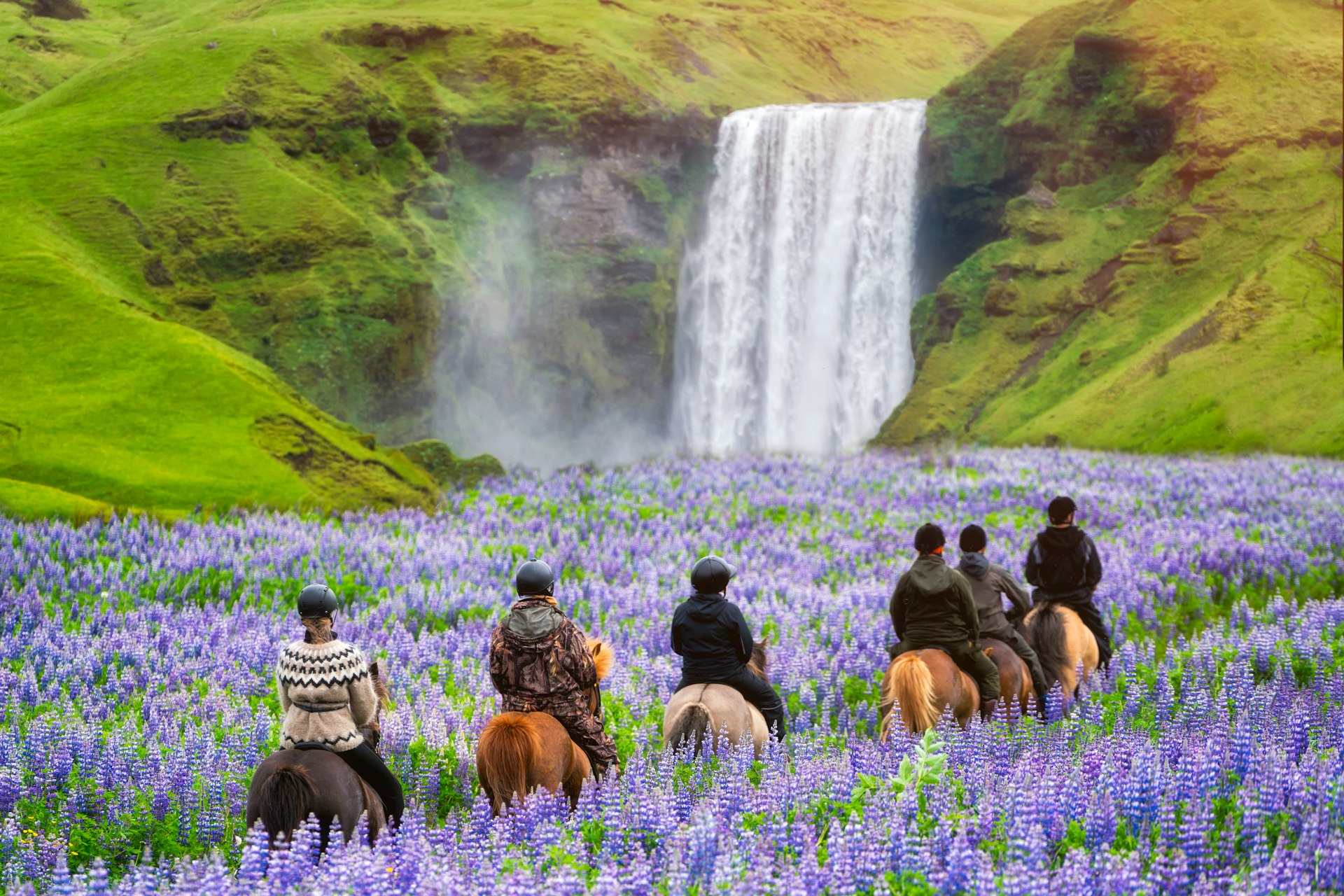
Iceland’s lupine fields
Recommended by Bailey Freeman
If you love a good flower field, Iceland in summer should rank at the top of your list. The island country takes on a blanket of purple blooms that contrast strikingly with the black volcanic soil and soft green moss that are so characteristic of its environment. And the Icelandic lupines have a fascinating story: they’re actually from Alaska, introduced back in 1945 to rejuvenate the island’s wrecked soil. Iceland was originally covered in forests long razed by its original settlers; lupines reintroduce nitrogen into the dirt, making it fertile ground for trees and other native species to find purchase once again.
But there can be too much of a good thing, and questions about the lupine’s invasive status are ongoing. That said, one can’t deny that these fields have created some of Iceland’s most iconic vistas. You’ll find the majority of lupines in Iceland’s Golden Circle, around Reykjavík and up to the Westfjords.
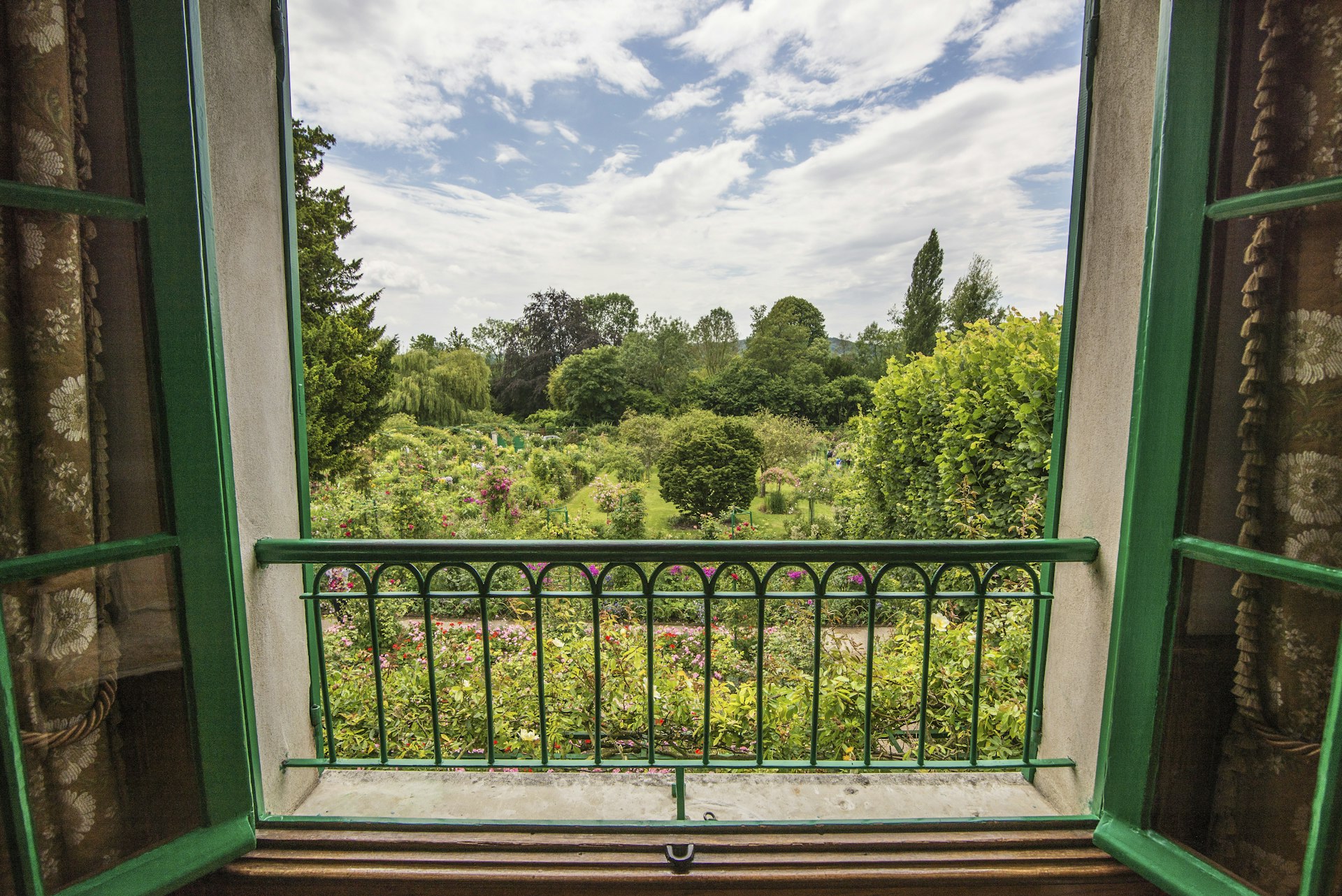
Giverny, France
Recommended by Debbie Olsen
If you could only visit one garden in your lifetime, make it the one that inspired Claude Monet. “I don't want to believe that I would ever be obliged to leave Giverny,” he once wrote. “I'd rather die here in the middle of what I have done.” Monet lived the last 43 years of his life at his home in Giverny where he built, nurtured and captured the beauty of his gardens in paintings. Some 500,000 people visit this site outside Paris every year and most head straight to the water gardens that inspired his Water Lily and Japanese Bridge paintings. The water lilies bloom in late July and early August and the recreated Japanese Bridge covered in purple wisteria seamlessly blends into the scene.
The flower gardens are equally impressive. Filled with countless perennials and nearly 100,000 annuals, they are a riot of color that spills onto pathways unconstrained as the great artist designed them to be. The two gardens perfectly contrast and complement each other, and they are uniquely beautiful in every season. As you wander through these spectacular gardens and Monet’s restored home, imagine the aging "painter of light" capturing the scenes that surround you.
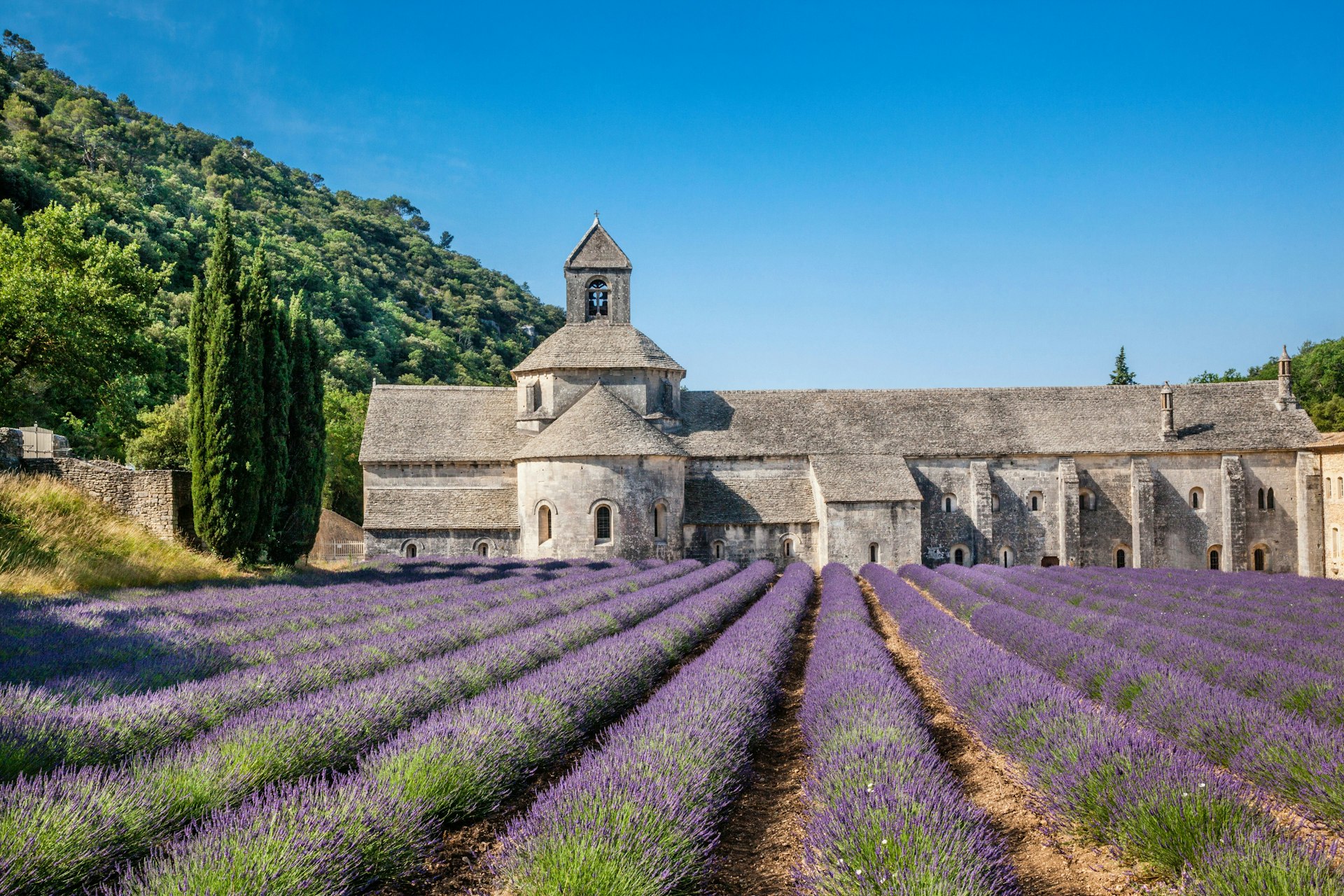
Provence’s lavender fields
Recommended by Kerry Walker
Lavender-carpeted fields fading into the watercolor distance on a summer day is the dreamiest of French images. Heady scents, humming bees and a never-ending purple haze — it’s enough to make you want to press the pause button on the romcom, pack your bags and move to France pronto for a genuine slice of la belle vie. You might, with luck, land in lovely Provence, where the whiff of lavender intoxicates in July and August and the bucolic landscapes, embroidered with rolling hills, vines and honey-stone villages, are drenched in the soft light that enraptured a paintbrush-wielding Van Gogh.
Begin your odyssey with a walk or pedal on the serene Plateau de Valensole, with its wildly photogenic lavender fields, and pop into family-run Lavandes Angelvin to see the distillery, learn about harvesting and bag essential oils, perfumes and soaps. More lavande, you say? Visit medieval priory Prieuré de Salagon, with tranquil gardens fragrant with native lavender, then stray deeper into the Luberon for mile after fragrant mile of lavender fields. The Musée de la Lavande offers a primer on the lavender extraction process, guided tours of the fields and a picnic with the prettiest of views.
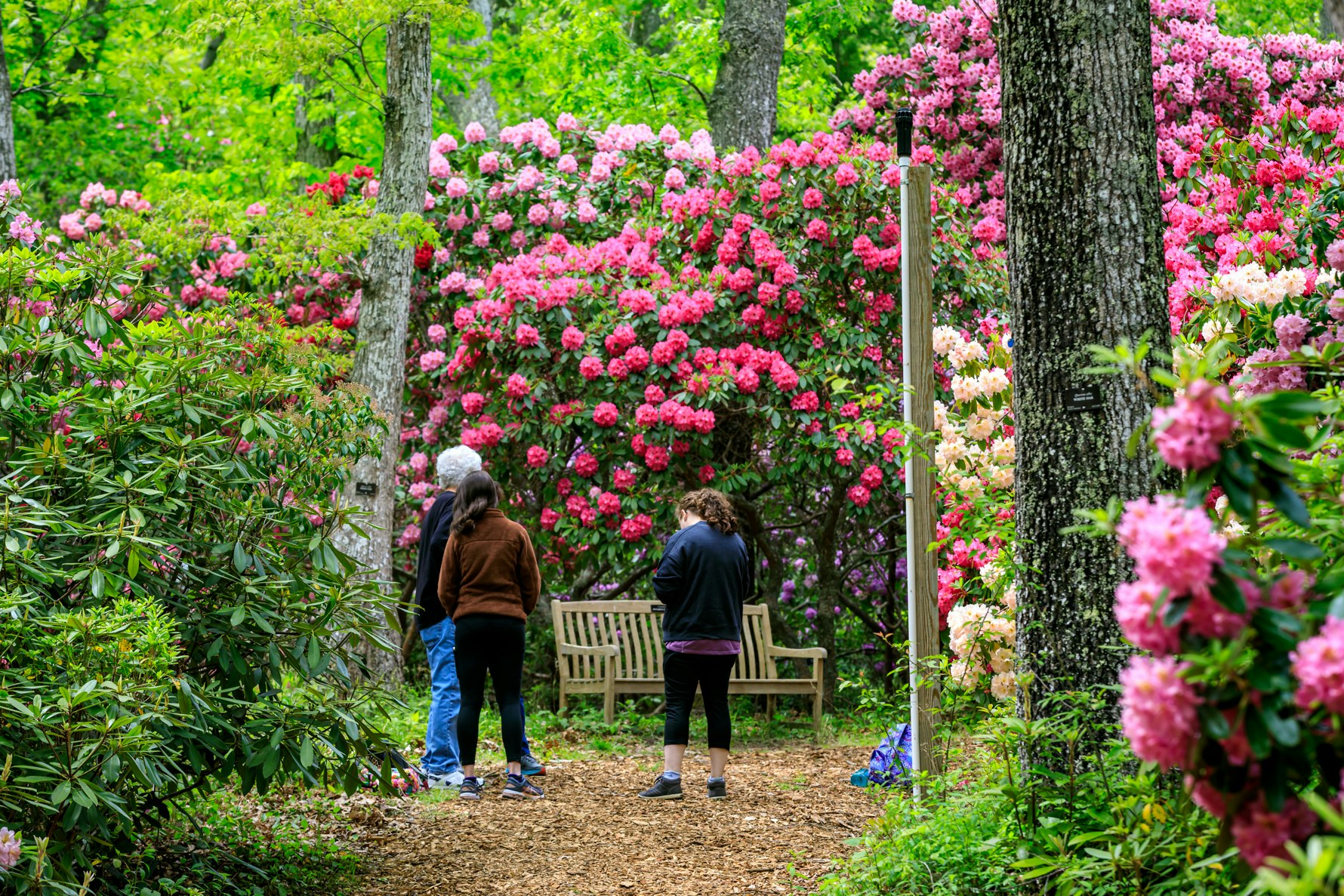
Heritage Museum & Gardens, Massachusetts, USA
Recommended by Mara Vorhees
Charles Dexter was 59 years old when he learned he did not have long to live due to his weak heart. He promptly moved to Cape Cod, Massachusetts to pursue his interest in horticulture for his remaining time on this earth. In the end, he spent the next 22 years developing hybrid varieties of rhododendrons that could withstand the cold. His thousands of seedlings were the foundation of the Dexter Rhododendron Garden, a centerpiece of Heritage Museums & Gardens today.
From early May to mid-June, the rhododendrons burst into blooms of all shades, from pure white to pale yellow to vibrant pink and purple – surely ranking among the world's most beautiful flowers. The rhodies are a big draw to Heritage Gardens in late spring, but there’s always something blooming at this wonderful Cape Cod property – daylilies in July and August; hydrangeas into September and October; and multicolored foliage throughout the fall. Even in the depth of winter, twinkling holiday lights ensure that all is merry and bright. Besides the seasonal blooms, there are also nature trails, children’s play areas, sensory gardens and changing thematic exhibits. Not to mention a collection of old automobiles and the delightful, century-old Looff carousel, harkening back to Charles Dexter’s time.
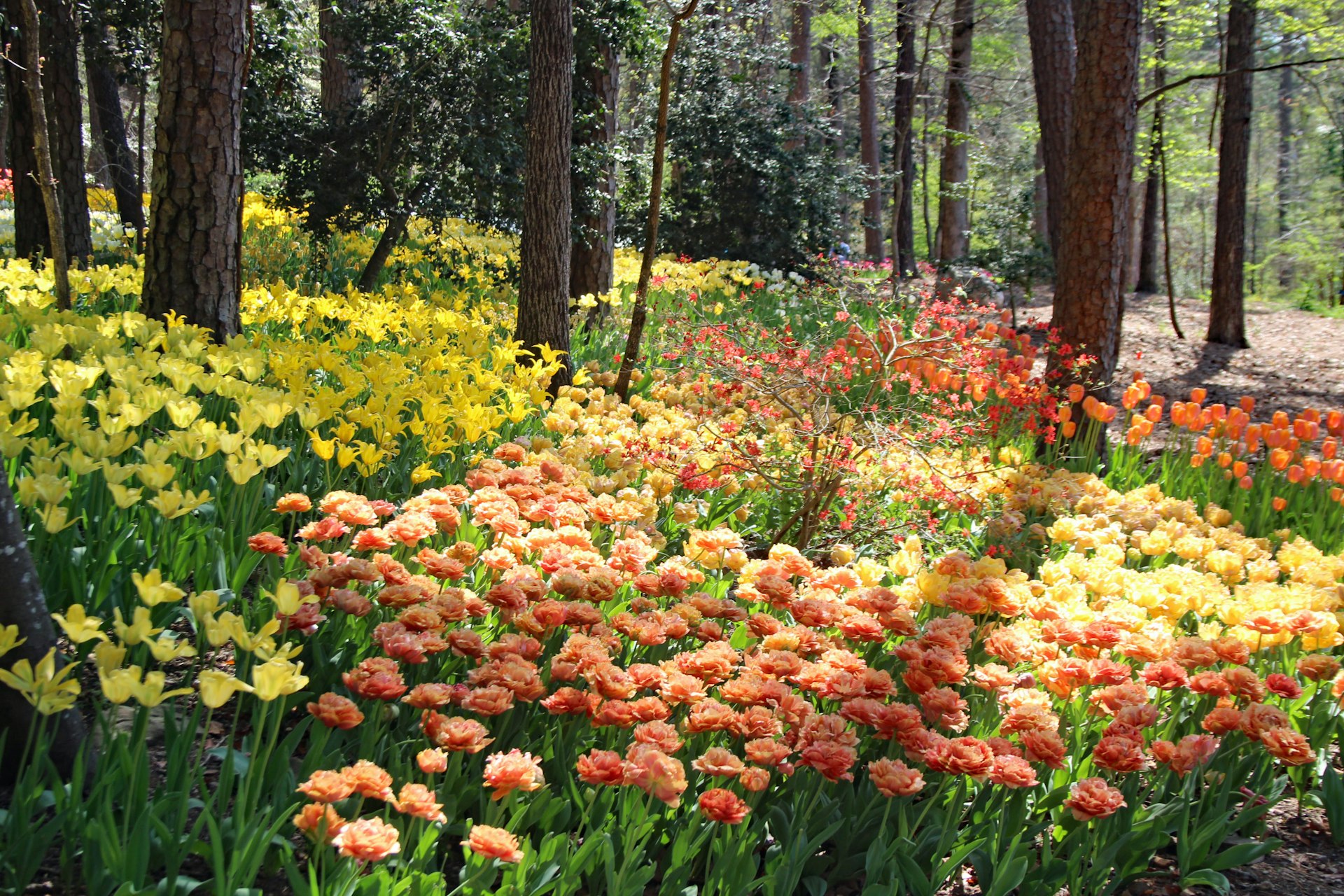
Garvan Woodland Gardens, Hot Springs, Arkansas, USA
Recommended by Margot Bigg
Although Arkansas’s Garvan Woodland Gardens are home to all sorts of foliage — from dwarf pines to azaleas — it’s the 150,000-strong rainbow of tulips that steals the show. The first signs of spring usually come in March, when a flurry of daffodils, crocuses and hyacinths burst forth, blanketing the gardens with shades of pink, violet and butterscotch. The tulips are next to bloom, creating a multihued spectacle that stretches across the garden’s 210-acre expanses. Wander along (or tiptoe through) meandering pathways flanked by a motley of these gorgeous perennials.
While you can expect to see plenty of classic triumph tulips — which are what most people envision when they imagine what a tulip is supposed to look like — the garden also counts plenty of lesser-known tulip types among its immense display. Keep an eye out for frilly Fringed Tulips, peony-esque double tulips, delicate lily-flowered tulips and vibrant parrot tulips, which get their name due to the petal-like appearance of their petals.
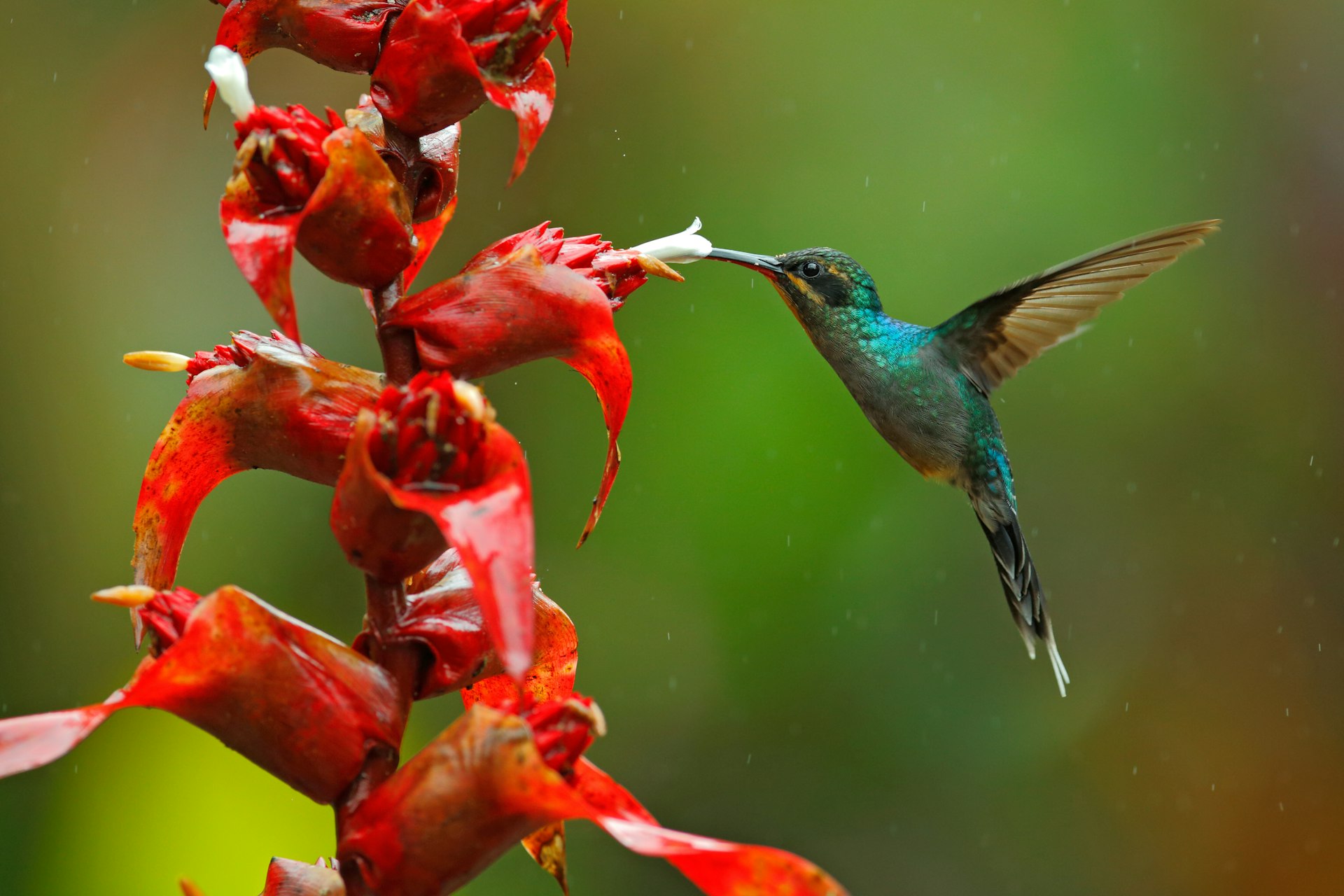
Ecuador's cloud forests
Recommended by Bailey Freeman
You’ll be hard pressed to find a country more biologically diverse than Ecuador – home to destinations like the Ecuadorian Amazon and the Galápagos Islands, this little South American country is an ecological paradise. And if you’re someone who loves unique blooms, look no further than the cloud forests of the country’s north end. Here amidst the fog-shrouded greenery you’ll find unbelievable flora big and small, many with an almost sculptural quality. Dramatic red heliconia with its claw-like blooms, ethereal angel trumpets, speckled bromerea, proud ginger blooms, stately bromeliads, and orchids of every iteration imaginable pop brightly against the brilliant green of the forest.
And in Ecuador, where there are flowers, there are hummingbirds; the Land of Eternal Spring harbors over a third of the world’s hummingbird species, with the largest concentration in, you guessed it, the cloud forest. So keep your camera at the ready – you never know who will join you as you admire the flowers.
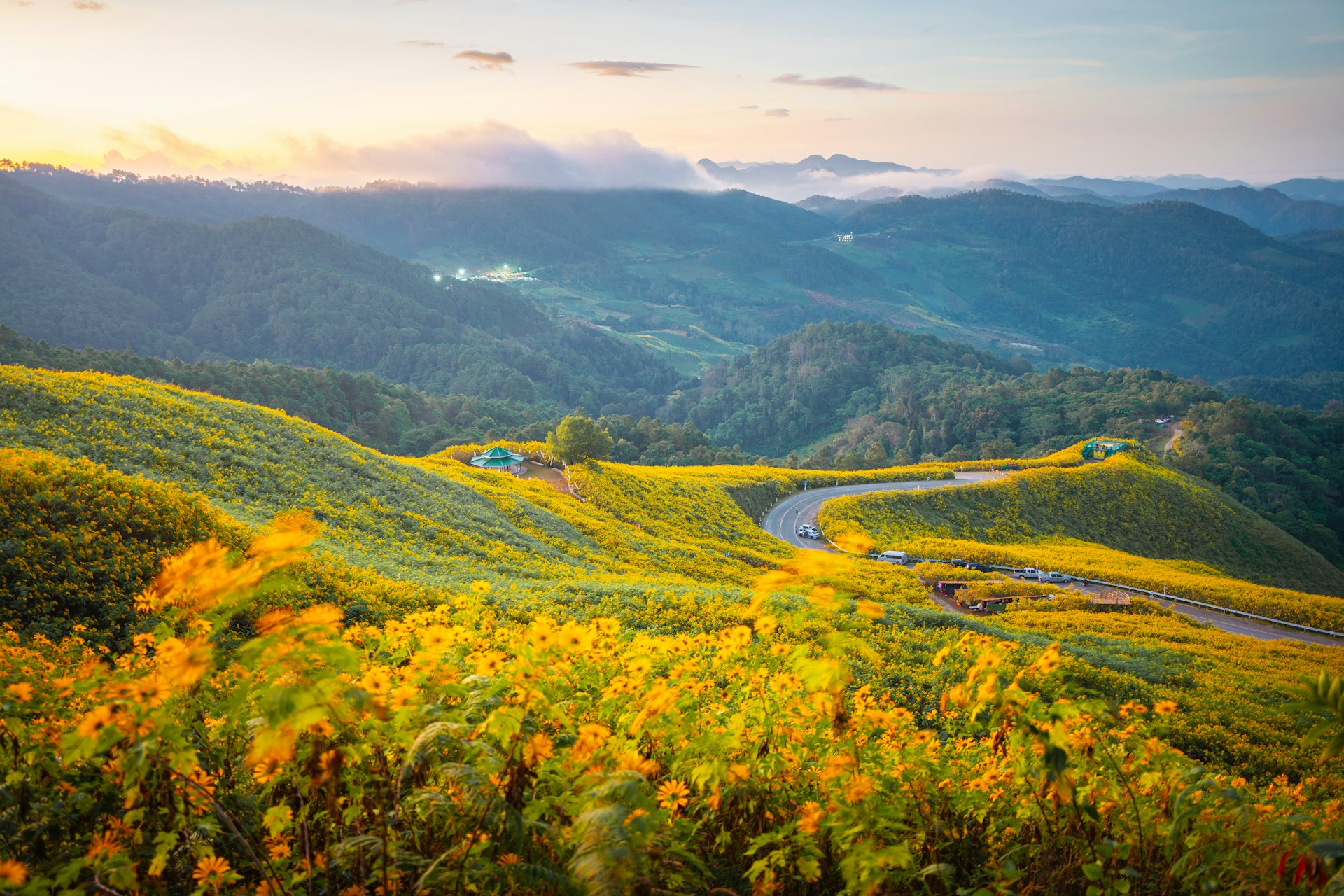
Bua Tong Field, Mae Hong Son, Thailand
Recommended by Aydan Stuart
It's a big ask going somewhere so remote at Mae Hong Son to see a field of flowers, but it's worth it. Simply put, Bua Tong Field is nothing less than picturesque in all senses of the word. Blooming in November, just as the weather cools and the skies are clear of clouds, a specific hilly area of Doi Mae U-kho in Mae Hong Son is suddenly slathered with a generous painting of brilliant yellow sunflowers as far as the eye can see. Famous across Thailand as being one of the country’s most incredible sights, this hard-to-reach plateau in the foothills of the Himalayas is considered one the largest wild blooms of Mexican Sunflowers the world over, covering over 1.6 million sq m of land.
Aside from its beauty, the bloom has become an auspicious event among locals, marking the start of the much-loved cool season. A festival is held every year alongside smaller events and activities that draw in good luck, and a generous helping of tourist coin. Campsites on nearby hills offer various misty morning views of the fields while honeymooning couples drag photographers around for the best shots of the year. If you have the time, pair a visit with the old logging outposts of Khun Yuam and Mae Sariang and forget about the world from a tranquil riverside balcony.
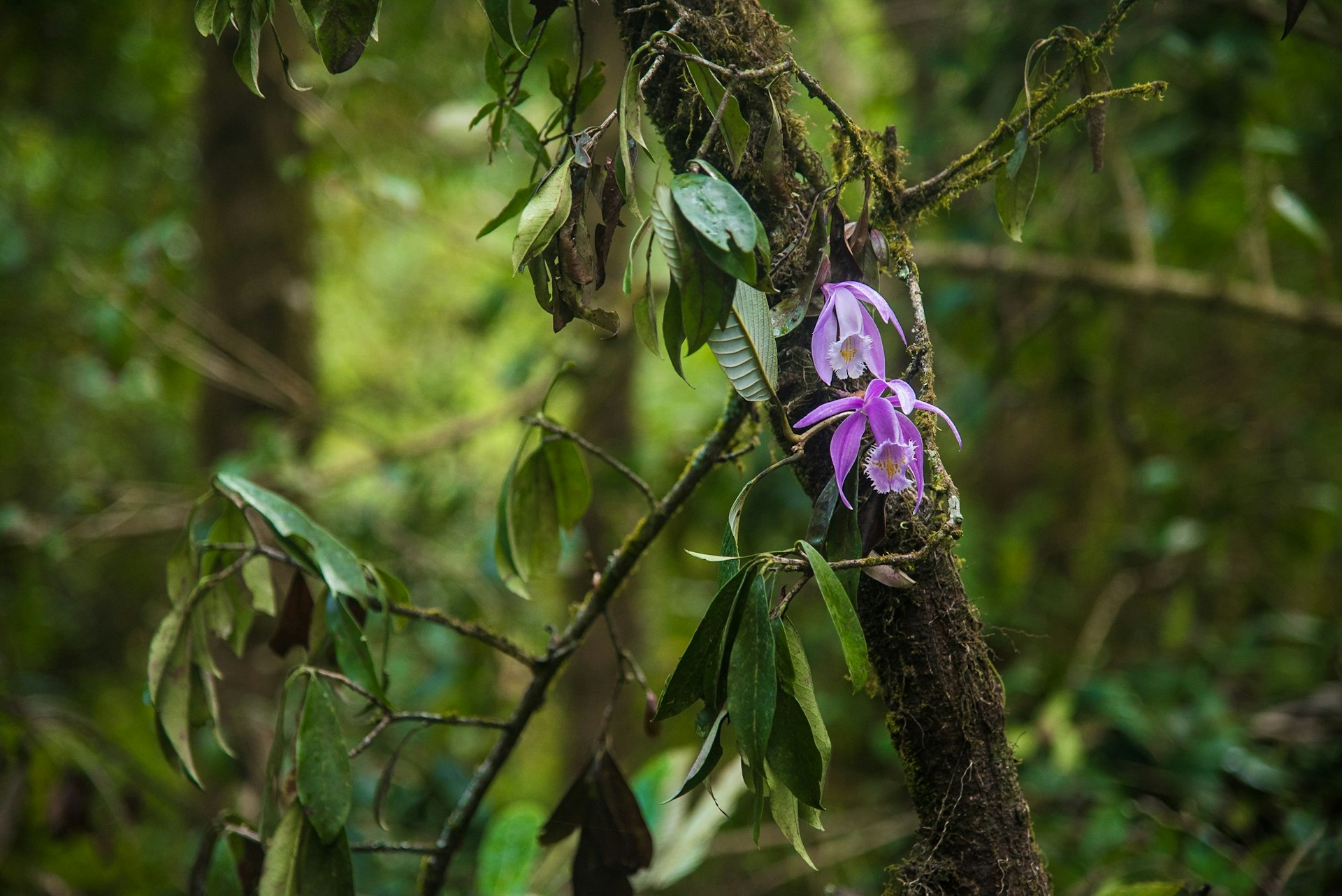
Sikkim, India
Recommended by Paul Stafford
What India’s second smallest state, Sikkim, lacks in size it more than makes up for in dramatic natural landscapes. Lying entirely within the Himalaya, even sharing the third highest mountain in the world, Kangchenjunga, with Nepal, Sikkim’s brooding landscape never sits still, constantly bartering with gravity. But if those snow-capped peaks sound unsympathetic, uninhabitable and perilous, Sikkim’s 600 species of wild orchid, along with thousands of other flowering plants, provide a delicate counterpoint. For example, the Dendrobium nobile, capable of flowering in winter, as well as springtime in the mountain forests, is the hardy Sikkimese state flower. Each year, the Sikkim Flower Show takes place in state capital Gangtok’s Ridge Park, celebrating the gladioli, lilies, periwinkles, frangipani and hydrangea that blanket the region, particularly from February to June.
Further north, near the Tibetan border, the Shingba Rhododendron Sanctuary protects 40 species of rhododendron, which form thick forests, providing a welcome habitat to rare red pandas, who particularly enjoy eating bamboo, while supplementing their diets with silky rose flowers, Campbell’s magnolia and tree rhododendrons, among other flowering plants that thrive in Sikkim.
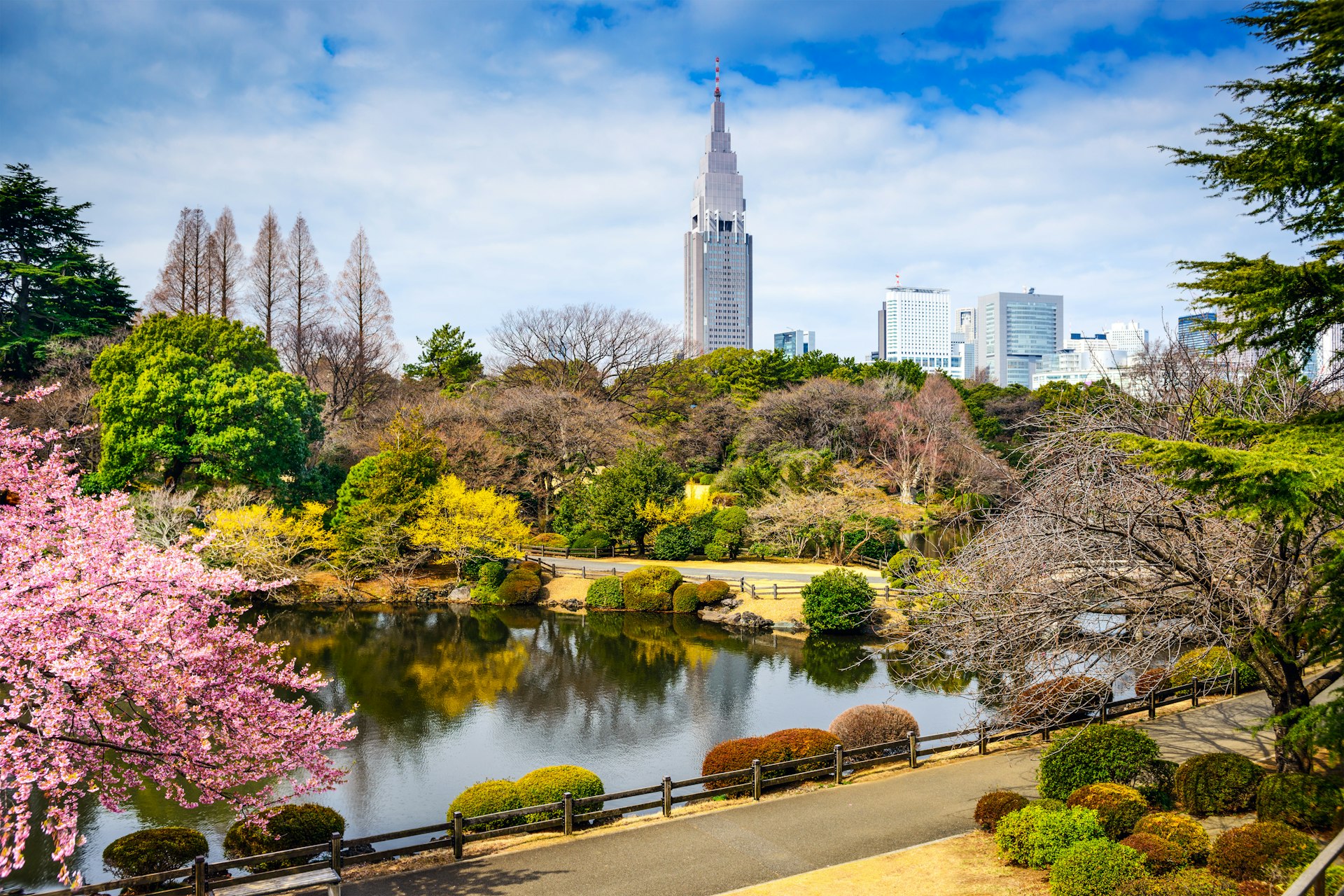
Shinjuku Gyoen, Tokyo, Japan
Recommended by Debbie Olsen
Delicate cherry blossoms, sakura in Japanese, are symbols of renewal and rebirth. They embody the fleeting beauty of mortality and offer hope and the promise of new life each spring. Shinjuku Gyoen National Garden is one of the best places to experience the beauty of sakura season in Tokyo. There are more than a thousand cherry trees in these enormous gardens with many species blooming at different times, which stretches the blooming season from mid-February to late April.
But there is beauty to be found in every season in the Shinjuku Gyoen. There are more than 10,000 trees in this 150-acre park as well as three different gardens in French, English and Japanese styles. Smell the roses and walk among beautiful blooms in the French Garden. Enjoy wide-open lawns surrounded by flowering cherry trees in the English Garden. Explore the magnificent Japanese landscape garden featuring large ponds with islands, bridges and walkways surrounded by manicured shrubs and trees and beautiful pavilions including the Kyu Goryotei, also called the Taiwan Pavilion, which was built in 1928 to celebrate Emperor Showa Hirohito's wedding. These expansive gardens were once Imperial gardens, and walking through them makes you feel like royalty.
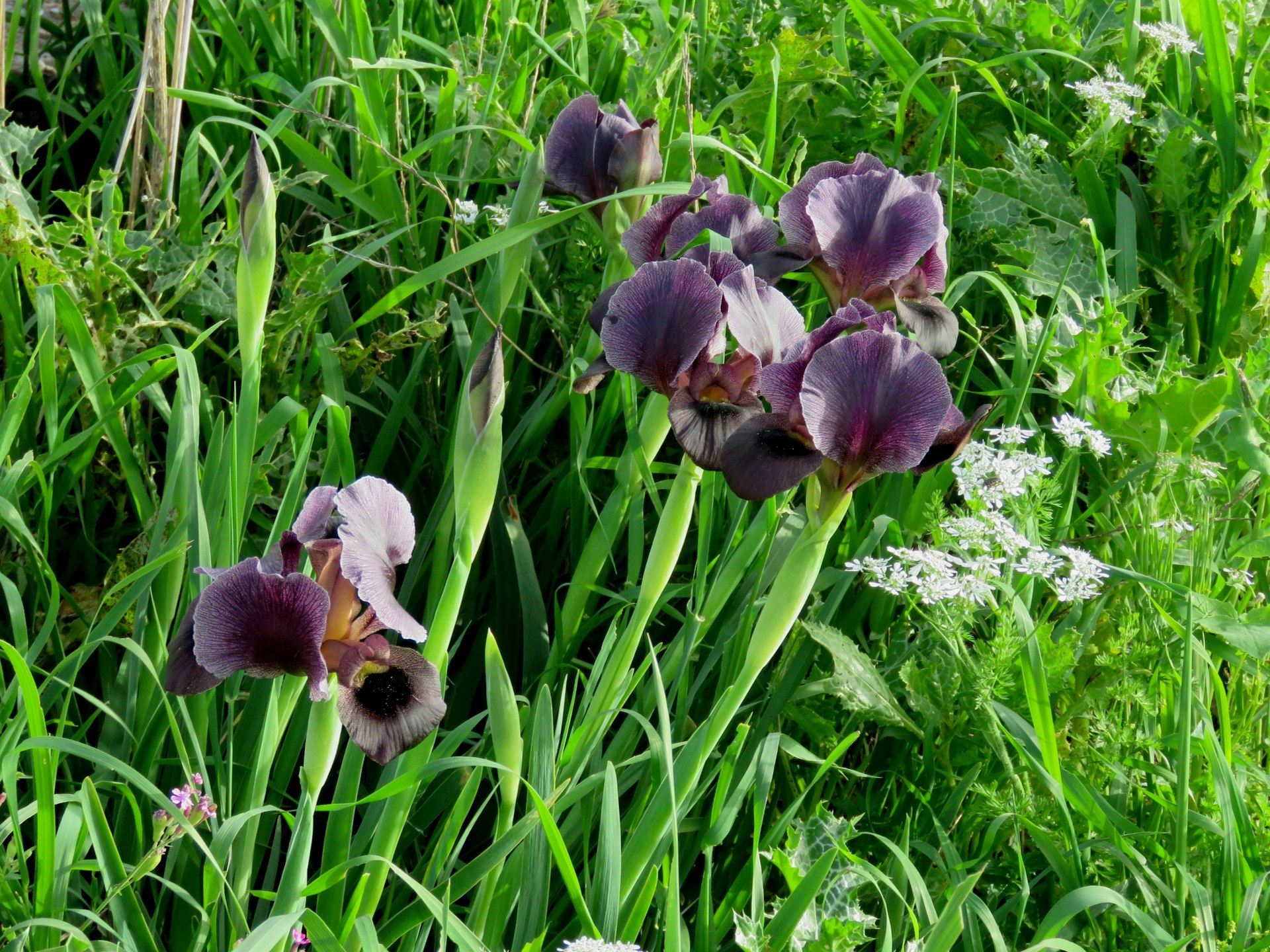
Jordan's spring flowers
Recommended by Jenny Walker
Cropping up between one Roman paving stone and the next, an audacious poppy puts in an appearance, blood red against the ancient grey of history. Within a week, it is joined by a legion of others, marching along the King’s Highway with unstoppable resolve. Soon the lone red warriors are joined by flanking troops of golden-petalled anthemis, mustard and fleabane until the northern highlands are overrun in knee-high color. This is spring in Jordan, much anticipated by the goats and sheep of a lean winter, and one of the highlights of an April visit to the country. To enjoy the show at its best, head for Umm Qais in the north. Here, an old Roman outpost with its basalt walls becomes the staging post for spring – a miracle that ripples south in a ribbon of black irises (Jordan’s national flower), thistles and bugloss for the pleasure of those who know to look out for it.
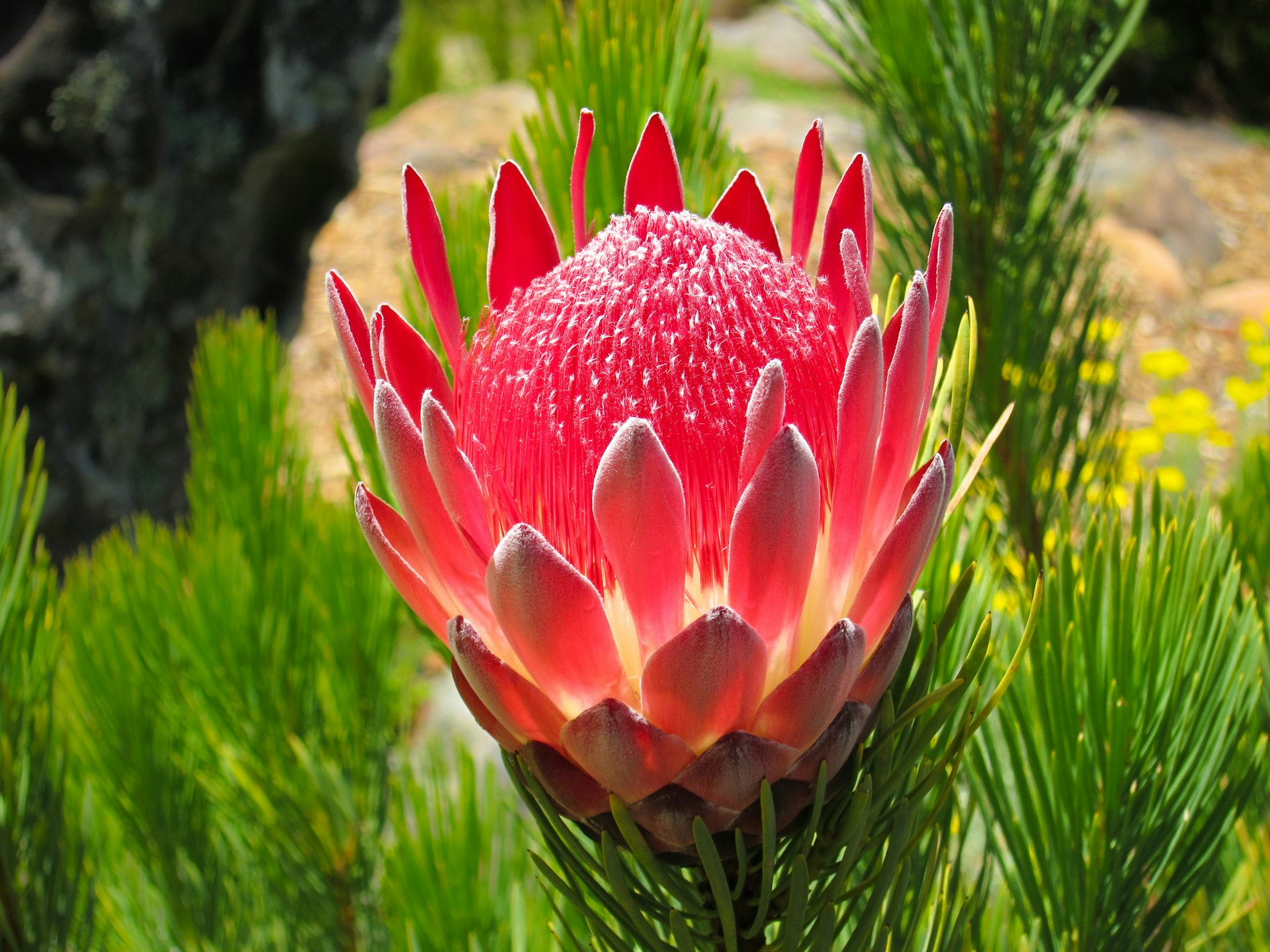
Kirstenbosch National Botanical Garden, Cape Town, South Africa
Recommended by Helen Ranger
When you first see South Africa’s national flower, the king protea, you could be forgiven for thinking it’s from another world. This enormous flower — each about 30cm (12in) in diameter — with yellow and white stamens and surrounded by a stiff, pink, pointy crown is truly unique. The best place to explore these and other enigmatic plants is at Kirstenbosch National Botanical Garden, nestled against the slopes of Table Mountain — a more dramatic setting would be hard to find.
Specific areas of the garden showcase fynbos, cycads, proteas and ericas, and there’s a waterwise garden, a fragrance garden and even a weed garden. Walking paths, a mountain bike trail and a Braille trail wind across the mountainside, and there’s a stage for summer concerts, a restaurant and a shop. The conservatory, dominated by a magnificent baobab, explains the ecological regions of southern Africa with the soil, rocks and plants found in each one. Easy to reach by car just 13km (8 miles) south of central Cape Town, Kirstenbosch is open daily. The Hop On-Hop Off bus and local buses stop here frequently.
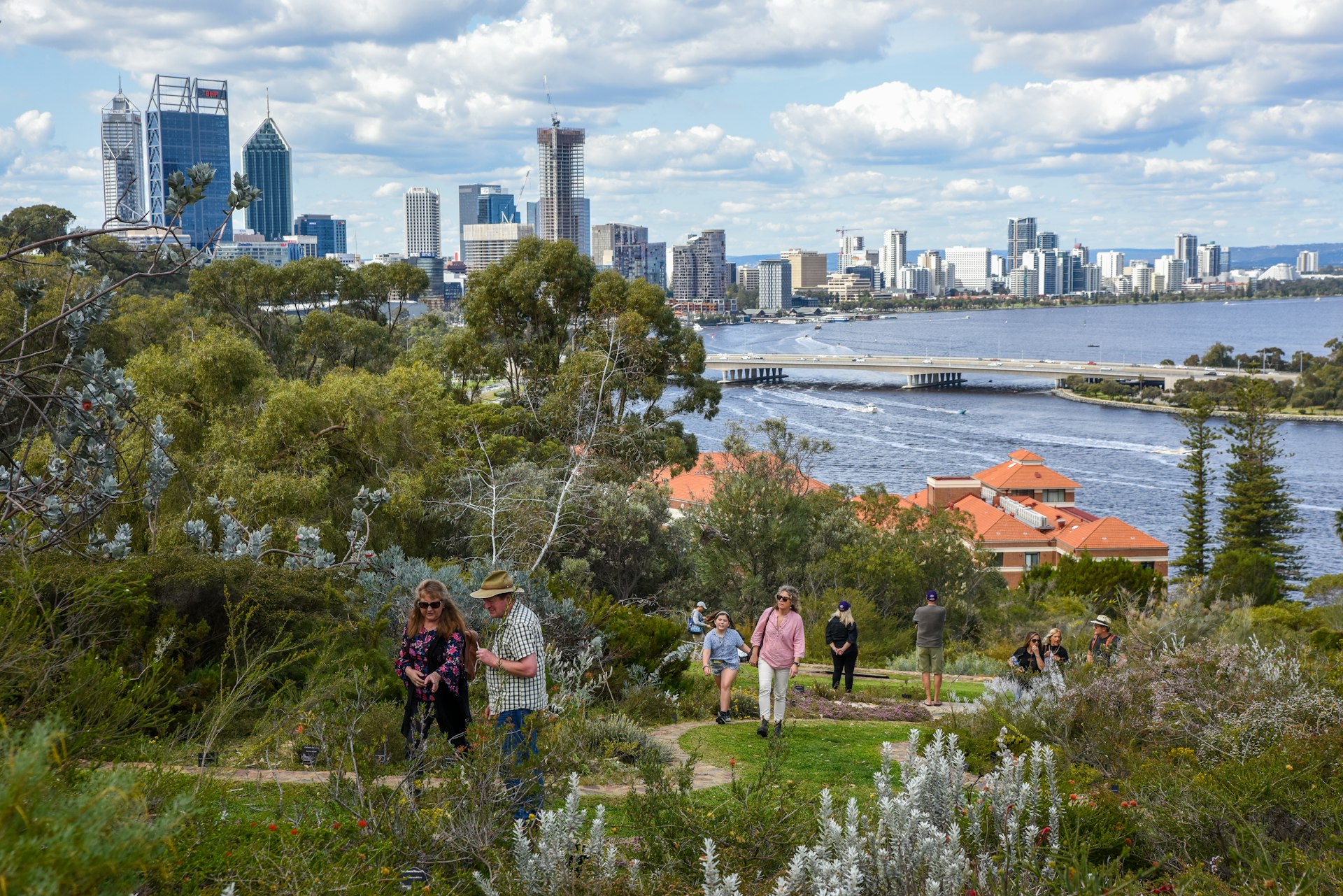
Western Australia, Australia
Recommended by Jessica Lockhart
With a whopping 12,000 native flower species – 60% of which are endemic to the region – there’s no question: Western Australia has one of the largest displays of blooms on Earth. While the landscape starts erupting in a riot of color as early as June in the northern regions, some of the most spectacular and accessible displays take place in the state’s southwest between September and November. Fitzgerald National Park – about a five-hour drive southeast of Perth – is considered one of the best spots to see this astounding display of biodiversity.
However, travelers don’t have to venture that far from Perth’s city limits to see some of the unusual varieties, including vibrant red Kangaroo paw, carnivorous sundew, blue-grey smoke bush, and countless species of orchids. Kings Park in Perth has more than 3,000 wildflower species, while the hills of the Swan Valley wine region – just 25 minutes from the city center – burst with color during Kambarang (the Noongar name for wildflower season). Away from urban settings but only 30 minutes from Perth, the trails of John Forrest National Park offer up the dream combo of wildflowers and waterfalls. Finally, don’t miss the opportunity to taste some of the blooms. Some – such as Geraldton wax – are considered “bush tucker” (wild food) and can be found seasonally on menus at restaurants such as upscale Wildflower in Perth’s city center.




